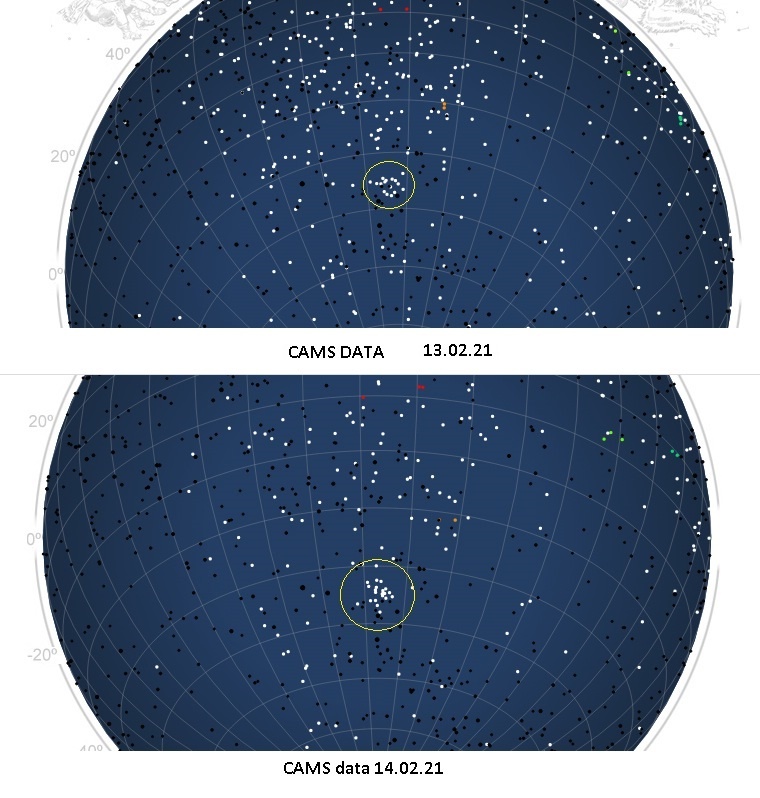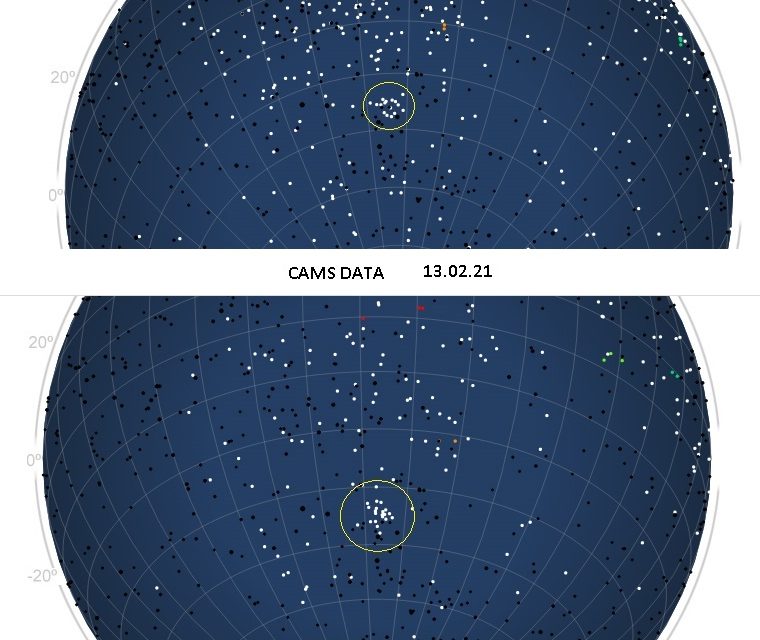Abstract: A meteor outburst from what may be a previously unknown shower now called the gamma Crucids (code GCR and IAU shower number 1047) was recorded by Southern hemisphere CAMS networks on 2021 February 13 – 15. The meteors radiated from R.A. = 192.6, Decl. = -56.0 degrees. It is possible that this is a return of the alpha Centaurids (IAU#102), a strong shower observed by visual observers in 1980 on February 8. Those meteors radiated from a radiant at R.A. = 210.9, Decl. = -58.2.
In mid February, an unexpected meteor shower was detected in observations of the Southern hemisphere low-light video camera networks CAMS Australia (M. Towner), CAMS Chile (S. Heathcote and E. Jehin), and CAMS New Zealand (J. Baggaley). See the meteor shower radiant maps posted at http://cams.seti.org/FDL/ and select the dates in the calendar for 2021 February 13 – 15 (Jenniskens, 2021). The meteors radiated from a point near the constellation the Southern Cross and appeared to be a previously unknown shower, which now has been given the name gamma Crucids (GCR, IAU#1047).
The meteors radiated from a geocentric radiant at R.A. = 192.6 ± 3.3, Decl. = –56.0 ± 1.6 deg, with a velocity of Vg = 55.8 ± 1.7 km/s. The first shower meteors were triangulated on 2021 February 11 at 1h UTC (322.7 degrees solar longitude, Equinox J2000). Activity peaked on February 14. The most recently analyzed meteor occurred on 2021 February 15 at 9h UTC (326.6 deg). 40 meteors give the median orbital elements and 1-sigma dispersions of:
- a ~ 17 AU,
- q = 0.930 ± 0.023 AU;
- e = 0.946 ± 0.174;
- i = 100.8 ± 2.7 deg;
- ω = 28.5 ± 6.1 deg;
- Ω = 144.21 ± 0.99 deg

Figure 1 – The circle marks the concentration of radiants of the gamma Crucid outburst in the recent CAMS radiant maps. Image courtesy of Ivan Sergei (Belarus).
The meteoroid stream belongs to an unknown Halley-type comet in a steeply inclined orbit to the ecliptic plane. It is possible that this is a return of the alpha Centaurids (IAU#102), a strong shower observed by visual observers in 1980. At that time, the radiant position was reported to be at higher right ascension R.A. = 210.9, Decl. -58.2 and an annual shower around this position was recently given that shower number, but perhaps incorrectly so.
The question whether or not the 2021 outburst is a return of the 1980 outburst can perhaps be answered from the original plots of the visual observers or dynamical modeling. This question remains under investigation.
Jenniskens P., 2021. Gamma Crucid meteors 2021. CBET 9432. Ed. D. W. E. Green, Central Bureau for Astronomical Telegrams (issued Feb. 15, 2021).






